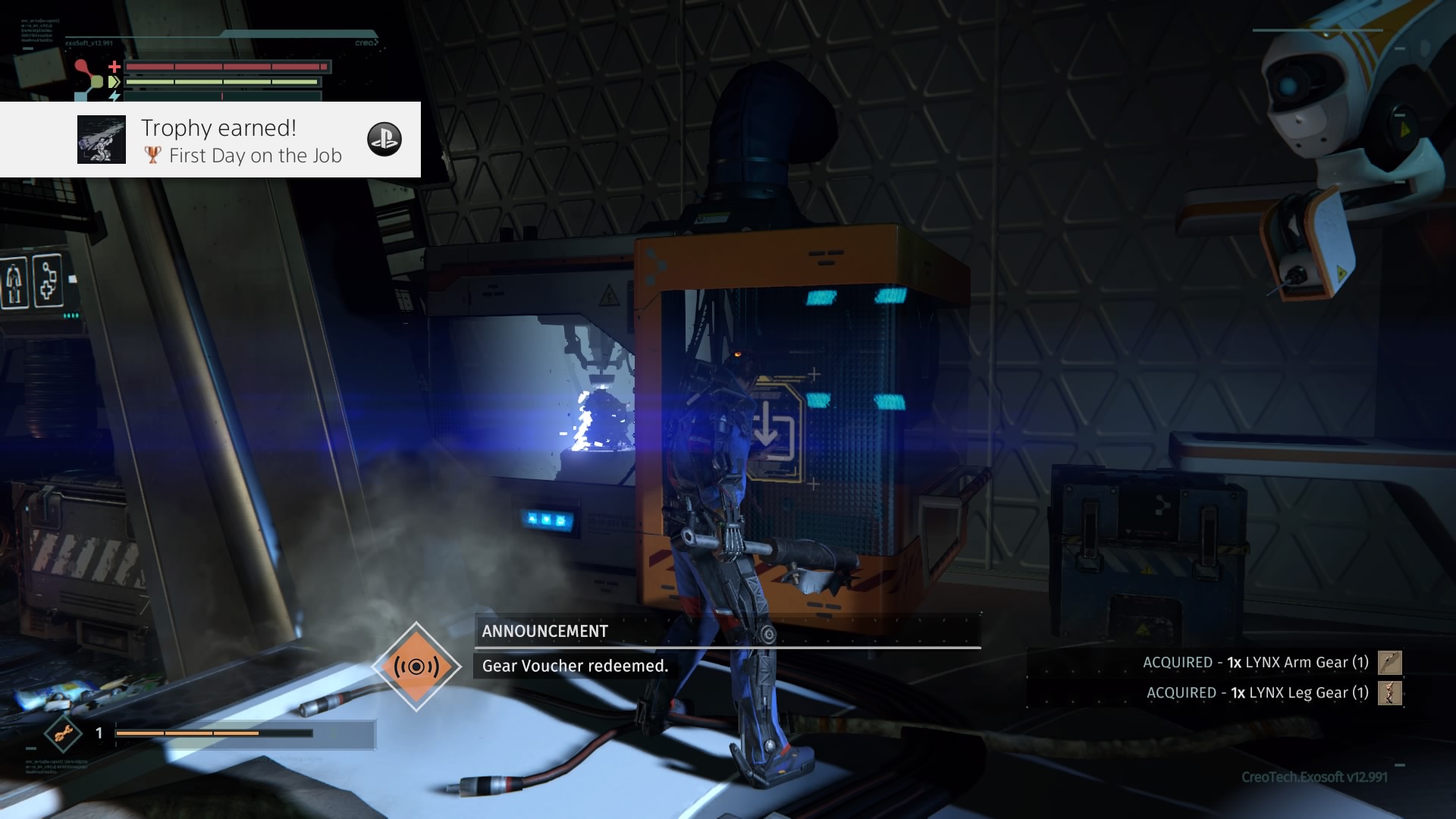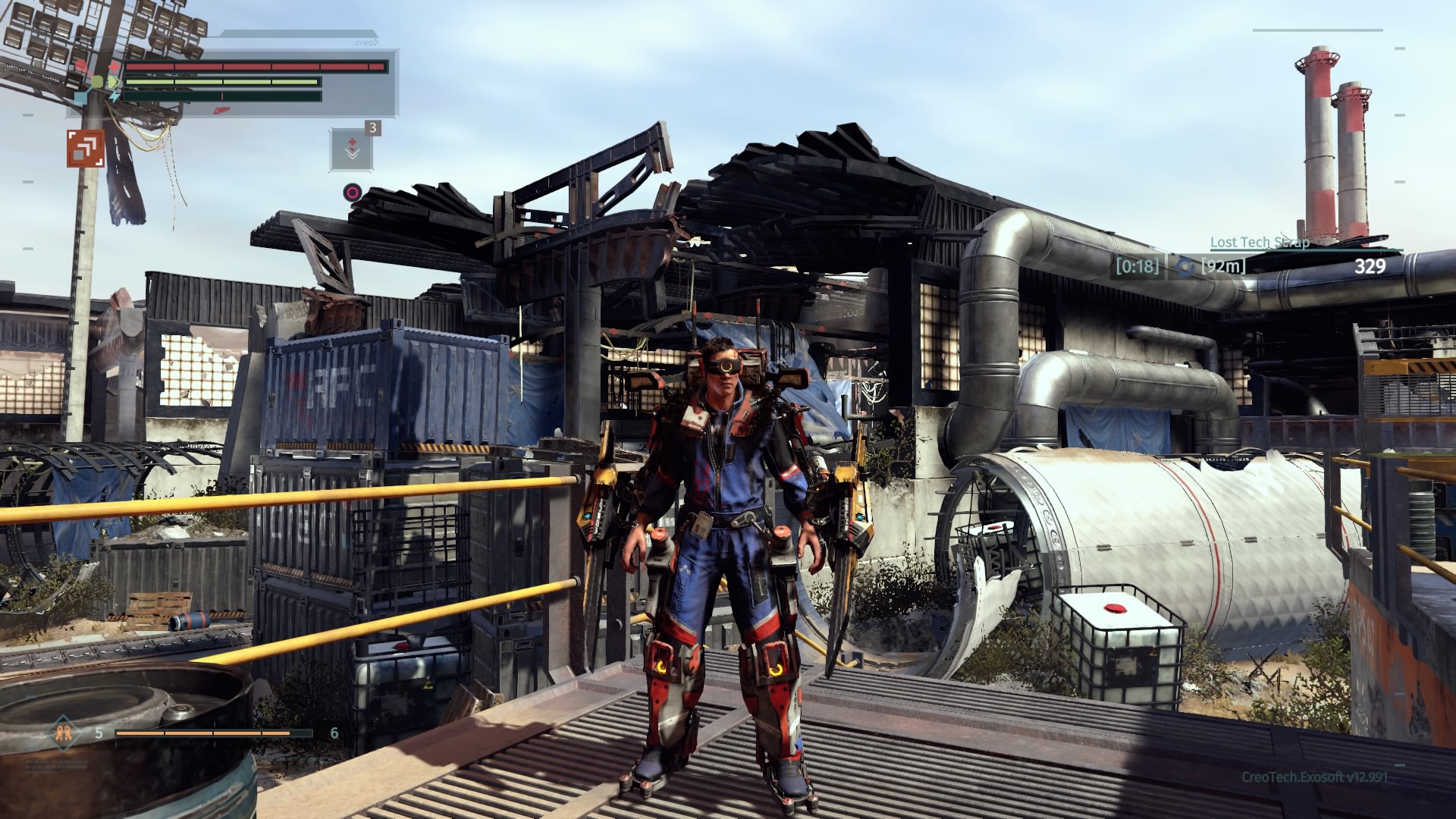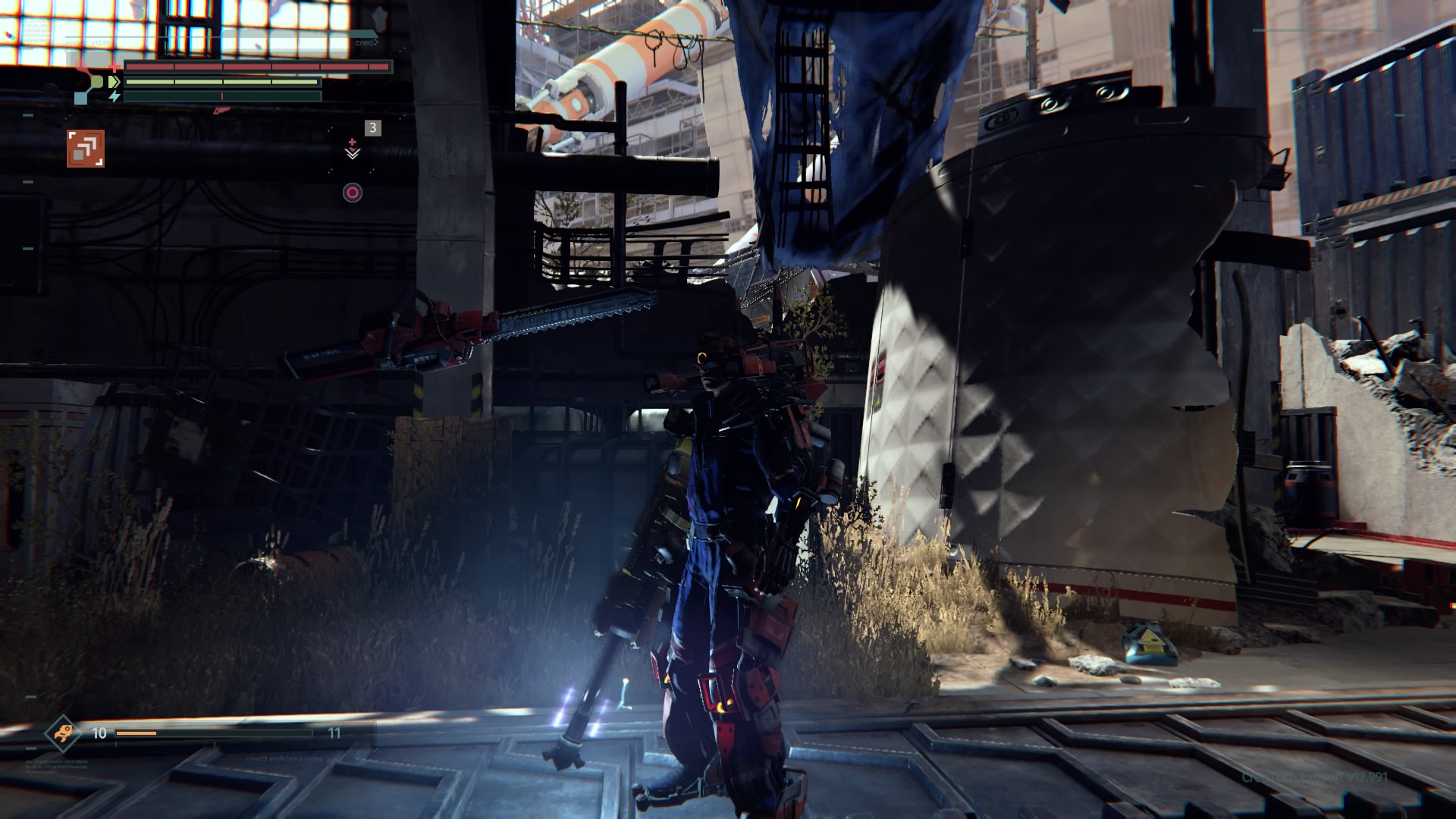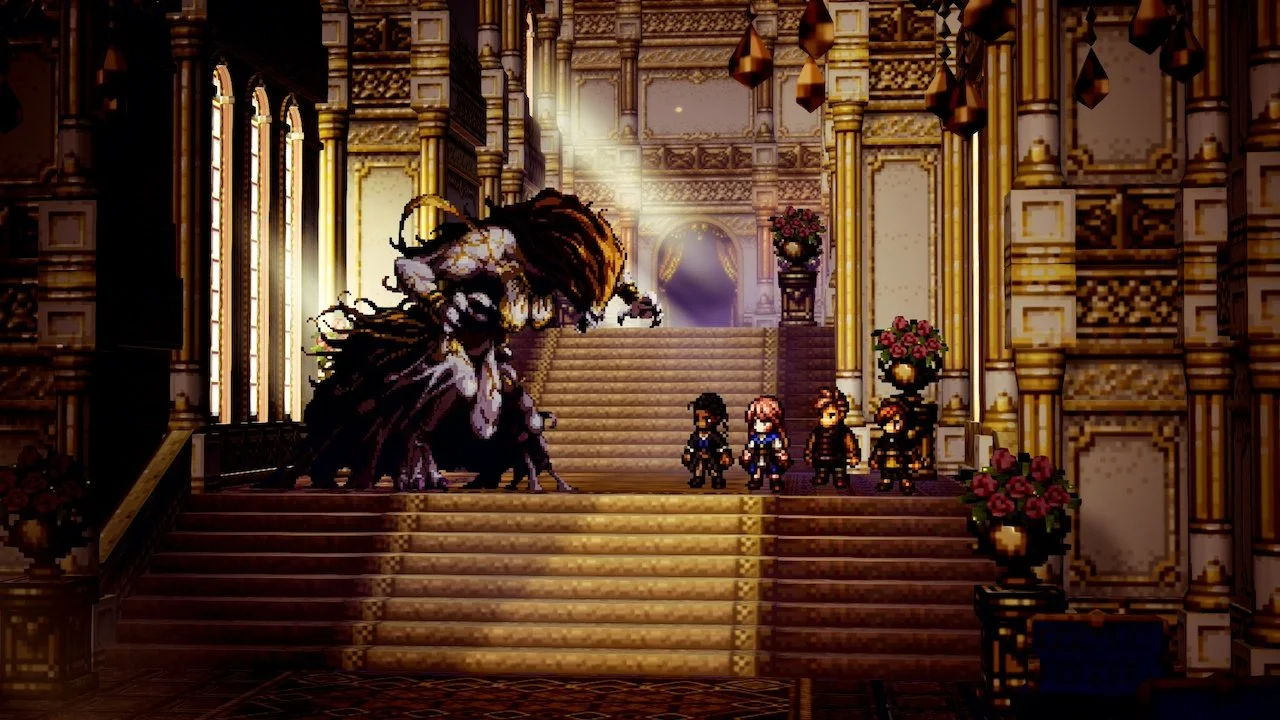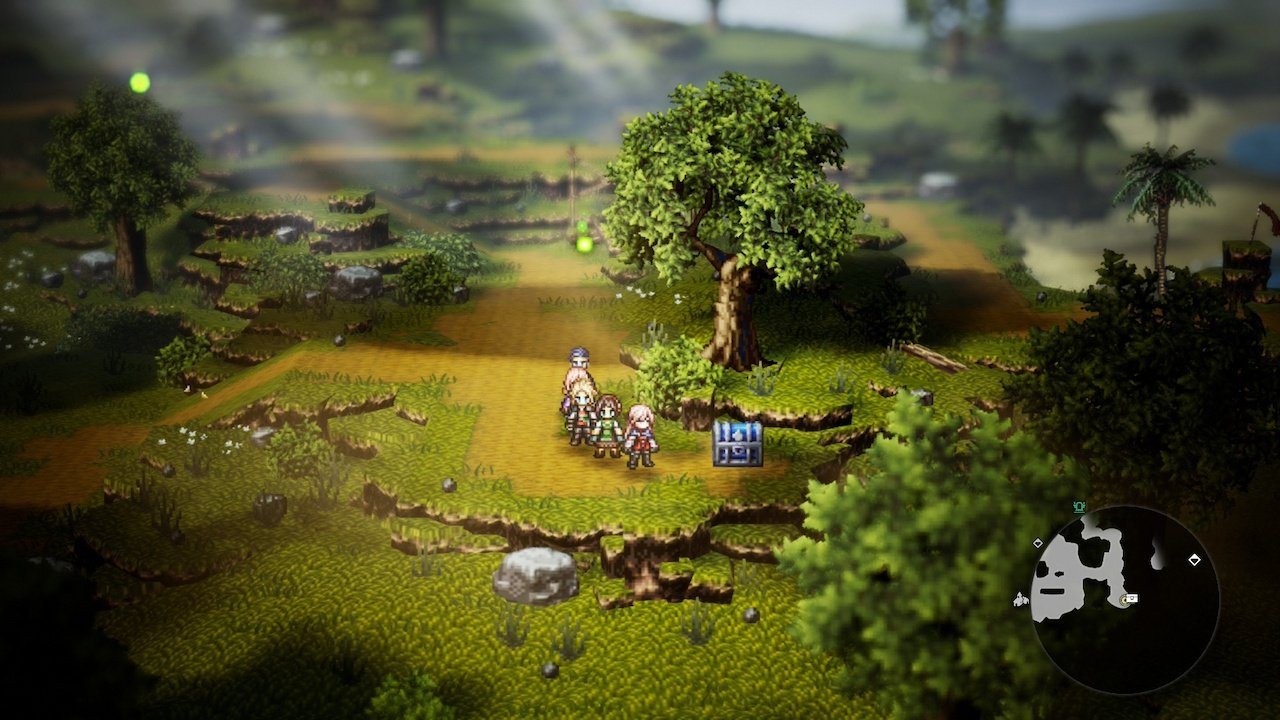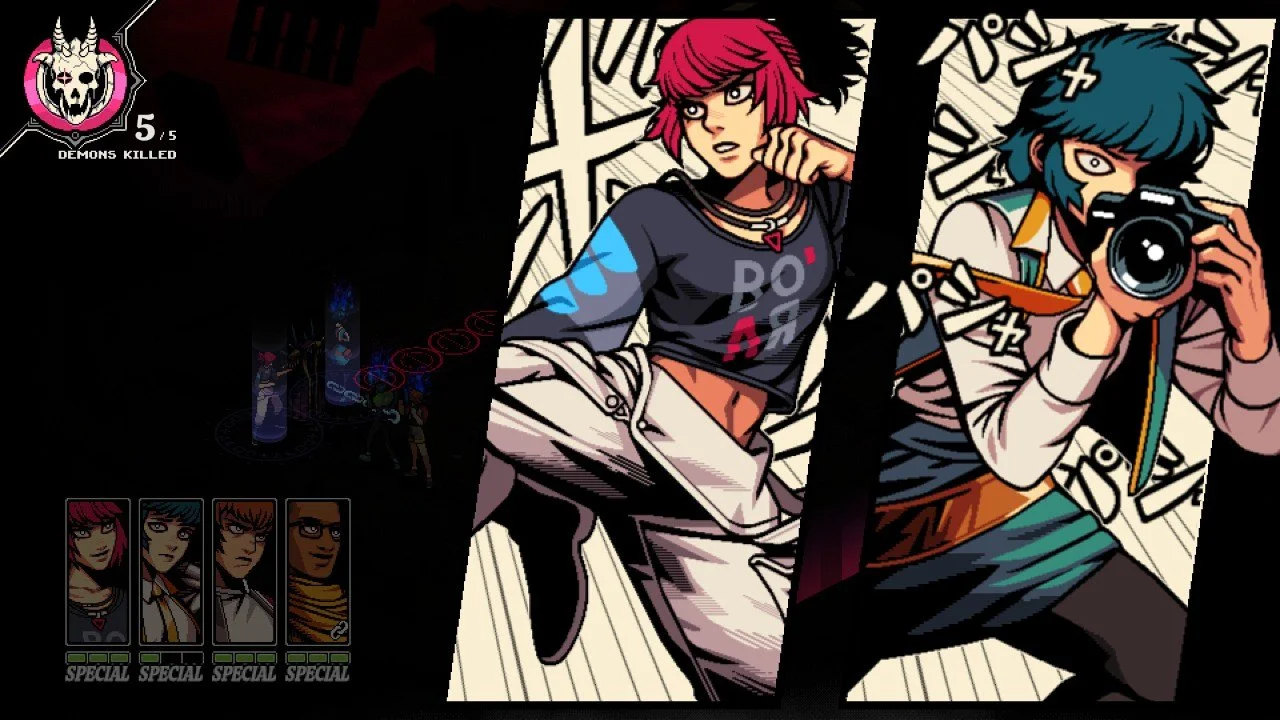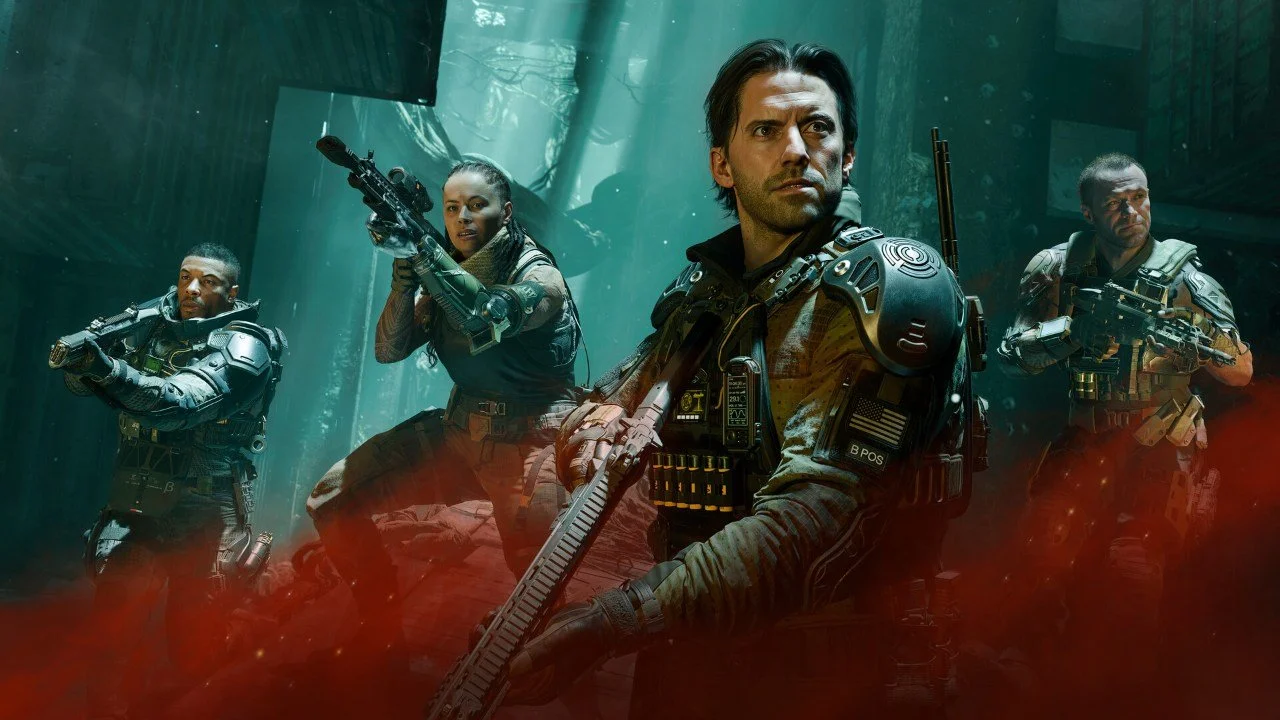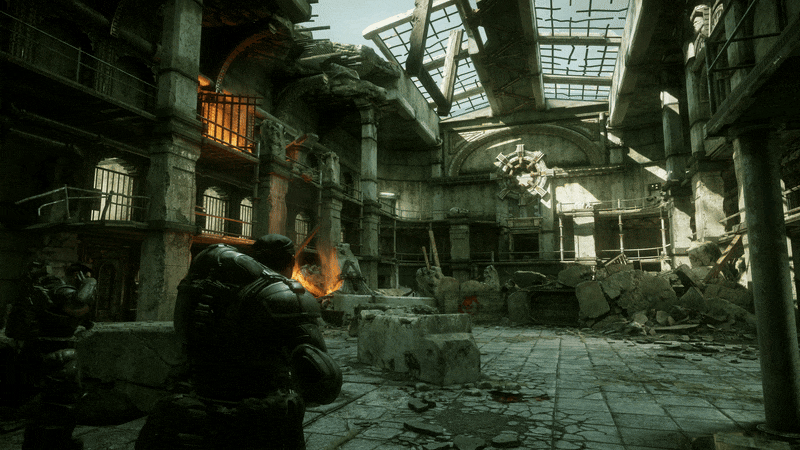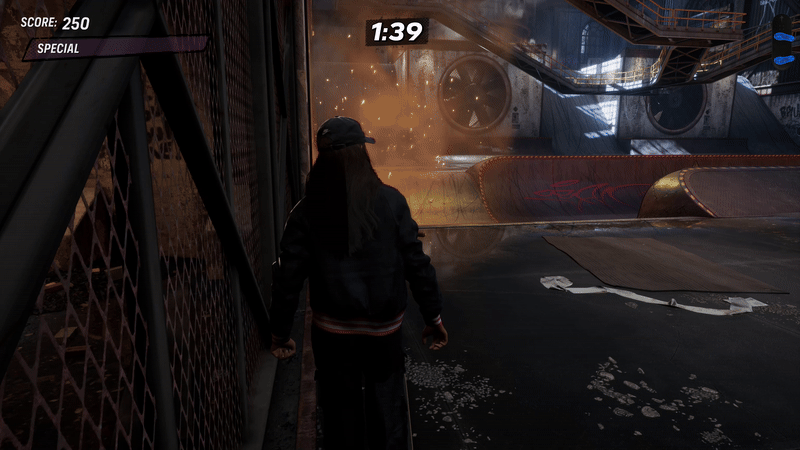Games like Demon’s Souls and its critically acclaimed spiritual successor, Dark Souls, carved a fantastic niche genre of gaming that can only be described as hardcore action-RPG. I say hardcore and niche because compared to what more mainstream games offer, games that fall under this category have a severely unforgiving nature and are best known for having an above average level of difficulty that is often frustrating, intimidating, and unappealing to gamers seeking a more casual and relaxed experience.
The Surge by Deck 13 Interactive is the latest addition to the limited ranks of this type of game. The great majority of titles in this action-RPG category, including Deck 13’s Lords of The Fallen, often seek to emulate the Dark Souls formula and just as often end up failing to deliver more than a mediocre clone that is incapable of adding any new ideas to this small but tired genre. From the get-go, The Surge aims to distinguish and distance itself from the Souls clone stigma by offering a refreshing, fast paced, more action-focused Sci-Fi spin on hardcore action-RPGs.
The Story
As expected from any self-respecting Sci-Fi story of the less than optimistic modern age the setting of the The Surge is a dystopia that of course wouldn’t be complete without an all-powerful megacorporation overseer. In the not so distant future, in a reality not so far removed from our own, the world is a barren industrial wasteland where all natural resources have been depleted and everything is crumbling apart. Luckily, a megacorporation named CREO is there to save humanity from itself, or is it? Behind the company’s unsettling Veridian Dynamics-like façade lie some heavy and dark secrets, and the game’s unfortunate protagonist is about to find out in the worst way possible.
There is no option for character creation in The Surge so by default you will take the role of a paraplegic, middle-aged man named Warren who is about to begin employment at CREO in exchange for an exosuit that will give him back the ability to walk. Sounds fair, right? It’s too bad nobody told poor, old Warren that he is about to have a really bad first day on the job. For an unexplained reason, just as Warren’s brand spankin’ new exosuit is being surgically implanted onto him, shit decides to hit the fan and a massive company-wide system failure disrupts all normal AI and automated robotic functions. This leads to a very graphic, bloody, and disturbing scene that surgical nightmares are made of where Warren ends up immobilized but without anesthesia and therefore very much awake for the whole process of grafting the frame for the exosuit into his flesh and bones. In pain, scared, and confused Warren passes out and wakes up some time later on top of a heap of junk where he was disposed of like trash.
To make things worse, your exosuit doesn’t even function properly and you have to find a new core before it’s too late. This is where your adventure truly begins, as you set off into the CREO facility in a search for a power core, and more importantly, to find out what the hell is going on. Soon you come to realize that this won’t be a task as easy as going up to the front desk and asking for help because to Warren’s dismay all the robots have gone rogue and are trying to kill him, and any human connected to an exosuit, which is essentially anybody inside CREO, has now been reduced to a twitchy, zombie-like flesh puppet with no self-awareness that obeys an unseen master and will immediately try to butcher you on sight. Humans are now the video game equivalent of Dr. Who's cybermen.
The story is simple yet solid but it also isn’t anything that hasn’t been explored countless times before and perhaps that’s ok in The Surge because storytelling takes a back seat to action. Although it’s always there like a looming presence via the setting, any actual story development is very subtle and happens mostly through finding audio logs that are scattered all over the place. Similarly, story development also happens through interactions with a very limited number of NPCs that haven’t gone feral and rogue, or through the developments that happen during and after boss battles. There is no quest line or a quest log for reference, and the very few hints as to the next objective are given to you by a mysterious character named, Sally, that shows up in your base as a holographic projection. A consequence of the limited number of interactions with other characters is that it translates into having only a handful of side quests. Likewise, RPG elements such as impactful decision making are kept to a minimal.
That being said, the scant amount of story doesn’t stop the game from offering some great moments, and those moments are particularly dark in nature often more visual, soft spoken, and with implicit consequences whose meaning isn't just spoon fed to the player. It’s perhaps the great execution of these few moments that really helps shape and set a unique tone for the story in The Surge.
Gameplay
The most distinct feature of The Surge as an action-RPG is that similar to Fallout 4’s VATS system, Warren can target an enemy’s specific body parts -normally, head, arms, body, or legs, in order to serve one of two purposes. The first one being to provide a means to hit an enemy’s unarmored weak points, something that becomes crucial for some end game enemies, and the second one being to serve as a way of farming enemies by chopping off specific body parts from them to get new armor pieces.
Learning and identifiying an enemy’s weak spot is the key to getting through The Surge. Not paying attention to this can seriously hamper game progression, especially with bosses. On the other hand, becoming good at timing your dodging to hit your enemies when it counts and where it hurts can lead to clearing an area with ease. This sense of ease can quickly lead to hubris and with it comes carelessness that I’m sure the developer was counting on to show the player that even the smallest mistake can have grave consequences.
There’s a steep learning curve when it comes to battle but given the right amount of patience and timing the game is fair. Enemies will usually be able to see you or sense you from far away but will often not react to sound. As you progress through the game enemy attacks will vary and require you to switch tactics every now and then, some of them will even counter your attacks and put you in compromising situations that will leave you wide open and ready to be killed. While the level of difficulty seems well balanced for most enemies, boss fights are a completely different monster. One hit kills abound in these fights and the game often takes a leap from challenging to frustrating. This doesn’t mean they’re outrageously unconquerable but you’ll certainly have to face off against these formidable foes several times to learn their attacks, and if you’re lucky catch a glimpse of what their weak point may be before restarting a long cycle of live, die, repeat.
Games of this ilk rely on limiting resources such as health items, stamina, and currency as a means of raising the stakes. Thanks to the miracles and implications of cybernetic enhancement on your character, however, The Surge innately tends to have a higher pace than other Souls-inspired games. What this ultimately means in regard to gameplay is that cool downs for stamina, abilities, and rate of energy gain are fast, forgiving, and allow for there to be good balance with the game's difficulty. Despite most enemies being slow and relatively predictable Warren is very fast and nimble on his cybernetic feet and it's because of this that the pace of an encounter will actually depend on you and how you decide to move. The weapon equipped will also contribute to the pacing since it will influence the move set of a combo, and the same goes for any active modifiers that may have been gained through armor and mods.
You can watch some representative gameplay of the game here:
Character progression takes place through upgrades to Warren’s energy core and exosuit rig. This is accomplished by trading tech scrap for upgrades at the med bay that serves as your check point within each level. Collection of tech scrap happens automatically each time you kill an enemy. Tech scrap can also be found as a consumable item either hidden in the environment or among the incinerated corpses of fallen enemies. Much like in the Souls games, here is where one of the game mechanics that is a staple of this genre comes into play, and that is that every time you die you drop all of the currency you're carrying, in this case tech scrap, and if you die before you manage to go back and pick it up you lose it permanently. I should probably mention at this point that every time you die you don't simply respawn where you left off, instead, you get sent back to the med bay at the beginning of the level and along with you all the enemies in the area respawn as well. The Surge ups the ante and adds a new twist on this game mechanic by adding a time limit for you to get your precious tech scrap back. This works well because it really raises what's at stake if you die and the same time it adds a sense of pressure and urgency every time you do die by forcibly encouraging you to battle as deadly and efficiently as possible in order to make it back to the dropped scrap before the time runs out. Staying alive for long periods of time not only prevents you from losing your tech scrap but also rewards you by granting you a scrap gathering bonus multiplier based on time alive and enemies slain. Luckily, you can bank your scraps at the med bay, that is if you're willing to accept respawning the enemies in the level as the price.
Every upgrade option in the game costs scrap but the total number of things you can upgrade with scrap isn't actually that high. For example, there are no skill trees or character traits, or stats that can be leveled up individually. All of that is gained through the crafting of armor sets won in battle and through the addition of removable mods to one of the unlocked mod slots on your rig. Rigs can be upgraded through game progression by discovering new ones that hold more mods and mod slots can be unlocked through leveling of the power core. Mods provide boosts to things like health, stamina, or energy and can also provide short-term benefits like active and passive healing, increased scrap collection, elemental damage to your weapon, etc. Mods themselves can't be upgraded but you will find different level mods as you progress through the game. Armor has pre-defined stats and set bonuses and it is crafted at the manufacture station in the med bay. Crafting requires tech scrap, gear components, and a schematic for the piece desired be it helmet, arm, leg, or body gear. Components for armor are gained through combat by targeting and cutting off what you need from your enemies. Armor can be upgraded at the manufacturing station granted that you already have the piece built, enough tech scrap, and the appropriate level components to do so.
While the ability to equip certain mods and armor pieces is limited by your power level and the amount of that power each one of these pieces would require, weapons have no minimum level requirements. Weapons can be one-handed, staffs, heavy-duty, single-rigged and twin-rigged, and the rule of thumb with them is that the faster they are the weaker they are as well. When it comes to gameplay each type of weapon does handle differently and each type will also have a corresponding move set for combos as well as different finisher animations. These animations tend to do a slow motion thing that is cool the first couple of times but becomes very disruptive and loses all of its novelty over time. Fortunately this can all be modified at any time in the options menu.
The final element of gameplay is a drone that you receive early in the game and that aside from being a key to certain doors can also serve a multitude of functions depending on the mods you find for it. Except for your first drone mod all others require a certain amount of energy to use. There are mods for attack, some for strategic purposes, and some for a temporary shield, but the most useful function of the drone is possibly to be your only, albeit weak, means of launching a ranged attack. Did I forget to mention? Despite being a sci-fi setting there are no ranged weapons like laser guns, missiles, energy spears, or even something more primitive like a bow, at least not for you. All combat in The Surge is close range and this can get annoying during those moments when you realize that you can't be strategic against flying enemies because you simply have no way of effectively taking them out without making your presence known to all the enemies in the vicinity.
Replay Value
There’s not much to find in The Surge when it comes to replayability other than an easy to achieve alternate ending, a couple of level dependent unlockables, and a somewhat hidden armor set. Almost to its own detriment, each level is very self-contained and consists of a straight forward path from start to finish that forces you to travel through and visit every corner and point of interest on the map. There are instances earlier in the game where you will encounter closed off areas that you’ll think are hiding some big secret but you soon come to realize that it’s just a matter of time and progression rather than going off the beaten path before you can access them. The most hidden thing is perhaps an armor set that can only be unlocked by obtaining coins from defeating a particular set of enemies. Although not obvious at first the armor set is hidden in plain sight, it’s just not easy to get since the enemies you have to defeat to get the coins can be considerably challenging and may require some extra effort to access. While the lack of intricacy in level design on its own is just a minor problem, it does indirectly create an issue for replay value by virtually eliminating exploration and the possibility of uncovering new or hidden areas.
Bugs
Bugs did unfortunately happen during my playthrough of The Surge and they ranged from minor to even game-breaking. The minor glitches I encountered were things like floating weapons and heads after disposing of an enemy. Actually, it wasn’t even the full head, just the hair. Nothing super disruptive.
However, the major glitches that I encountered were severe enough to significantly diminish my enjoyment of the game. There were several instances where an enemy would become untargetable which essentially makes fighting a daunting and near impossible task. Then there were the two instances where my game crashed both before and after a battle, but perhaps the most frustrating thing of all was that after my game crashed the first time an area that should have been accessible failed to open and made the game impossible to continue, forcing me to start a new file almost halfway through the campaign. I don’t know if this is a widespread issue but given the game’s considerable level of difficulty I wouldn’t judge anyone for putting the game on the backburner until a patch was released or for straight up returning the game before considering starting a new game from scratch.
What It Could Have Done Better
Given that The Surge uses targeting as a core piece of its battle mechanics I was relieved when for the most part targeting worked well and the benefits of using it were tangible. Where I have the issue is that, without targeting, battles were near impossible. There were several times where I couldn't target enemies that were too close to me and out of focus, and despite their proximity Warren would often not land any hits on them resulting in an almost immediate death. Another problem with targeting was that the camera became extremely temperamental and bad at providing good visibiility when a large enemy like a boss was a target and decided to move around too much or jump around. In these situations the camera placement would get out of hand, provide weird, zoomed in views rather than panning out, all of which is highly problematic when boss level enemies can easily one hit kill you and every action counts.
Having cleverly placed enemy encounters is another thing that The Surge could have done better. The game at times feels too linear since for every mission it funnels the player from point A to point B through a single and very specific pathway with predictably interspersed enemies. The result is that enemy placement hinges on being almost too predictable and ends up feeling uninspired. Every time you look past a corner or a set of boxes expecting an enemy you’ll probably find one exactly where you expected it to be. In this regard of level design, I’d also like to bring up the point that I found it troublesome and frustrating that there is mostly only one way from point A to point B. Yes, there are shortcuts that you can open as you move forward but the only way to move forward is through a specific path fighting these predictably placed enemies over and over again without the possibility of a stealth approach or a discoverable hidden route for those times where you’ve died so many times that all you want is to do is move on or at the very least try something different. Games like this that rely heavily on drastically punishing the player for making mistakes as a game mechanic need to be vigilant about finding a balance between being challenging and being repetitive.
Despite the sincere attempts at establishing lore through the super optimistic, almost heroic, in-game CREO promo ads and interviews as well as with the contrasting reality check audio logs that tell a very different story from the Kool-Aid that CREO’s trying to sell, or even the pictures and papers scattered in particular work spaces that hint at the background of some employees, it’s hard to become fully immersed and invested in the game. One of the reasons for this is that you never truly get a sense of who Warren is as a person, and this is fine if the idea is for him to simply serve as a surrogate for the player but if that’s the case it might have been better to not have a default character and offer players the opportunity to play as a custom one instead. Similarly, the game would have benefitted greatly by having more compelling and complex NPC characters that could offer something more than “fetch this” side quests. This way finding out their individual stories alongside your own would have served as a way to raise the stakes through emotional investment per se and provide an extra layer of motivation and draw to play for when exhaustion sets in after dying and going through the same section of a level repeatedly. You can only hack and slash at the same enemies so many times before it gets boring.
Weapon balancing is another thing that could benefit from some tweaking because none of the weapons really felt like they scaled with either the environment or my level even after being upgraded. Perhaps this is an adverse effect of having no level requirements to equip any weapon, although the problem isn't just that. The other problem is that the power of the weapons seemed to follow an all or nothing kind of pattern where weak weapons always felt too weak to bother with and heavy weapons were for the most part very powerful to the point that switching to anything less had more cons than pros. Just as an example of how this was somewhat of a problem is that although weapon usefulness somewhat improved later in the game through the bonus of certain armor sets I managed to play with the weapon I gained from the first boss for the entirety of the game and never found a weapon afterward that compelled me to permanently switch.
Verdict
I suspect that one of the biggest concerns prospective players will have given the reception of Deck 13’s previous game, Lords of The Fallen, is whether The Surge is another half-baked Souls clone or not, and rest assured that it's not. Although The Surge uses the tried and tested Souls formula it does so in a way that builds upon it and uses it as a springboard to flesh out new ideas and game mechanics that work well for this genre. What isn't as well fleshed out is the lore of the game, the protagonist, the antagonist or any character for that matter. Luckily, the game compensates for that with some quality, fast-paced action, and some mostly solid combat mechanics.
Visually, the game accomplishes its goal of creating the setting for a dystopian near future that could be credible as our own. Perhaps this is a result of the game fully taking place within the CREO facility but where I do believe the game fails is in creating truly distinct environments and enemies within its own world. As a result, the game feels like just one giant level where you fight the same enemies over and over again give or take a few variants. Although replay value is pretty low for this game the levels themselves are decently sized and often require more than one visit to complete. If, however, you're looking for exploration and hidden things to discover, this is not the game to do it in.
In conclusion, if you're a fan of sci-fi premises, hardcore action-RPGs, killer robots, action-heavy games, and are looking for a challenging game with some really tough boss fights The Surge has plenty of that to offer. On the other hand, if you're looking for stunning visuals, a good story with deep character development or intricate, cleverly designed levels with hidden areas ripe for exploration, you may want to look elsewhere.
Despite using a similar formula as a starting point, The Surge accomplishes what it sets out to do, which is to be its own thing and more than just another Dark Souls clone.








